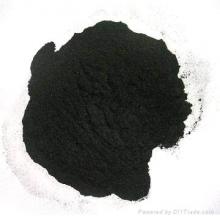Submitted by ivars211 on
MnO2
Manganese dioxide can be used as a catalyst in composite and whistling rocket propellant formulations. A thermite-like mixture can also be made with it. The manganese dioxide thermite burns more slowly than the iron oxide based mixture with a bright white glow.
Mangese dioxide can be obtained from old batteries or from the ceramics supply store. The mangese dioxide in batteries is mixed with several other compounds from which it must be separated. An easy, though messy way to do this is as follows: Find a couple of depleted carbon-zinc batteries. Only carbon-zinc type batteries will do. Do not use other types such as rechargable or lithium based batteries. These, especially the rechargable ones, contain extremely dangerous and/or poisonous compounds such as cadmium, mercury and metallic lithium. Carbon-zinc batteries may contain small amounts of mercury as well, especially the older types, so precautions should be taken to prevent skin and eye contact and to prevent breathing or swallowing of dust. So: wear your dust mask, glasses, gloves and old clothing. Then carefully take the battery apart. You'll find a greyish white (zinc oxide) or metallic coating (zinc metal) inside, depending on wheter the battery is empty or not. This surrounds a black, sometimes wet, mass. This black stuff contains among other things the mangese dioxide. Peel the coating off and save the black mass. There is also a black rod inside attached to the anode. This is a graphite rod and can be saved for chlorate (and maybe perchlorate) preparations. We'll assume you use 2 batteries from here on. (if not, adjust amounts accordingly). Place the black mass in 200 ml of 30% hydrochloric acid. The manganese dioxide will slowly dissolve, giving off chlorine gas. Chlorine gas is dangerous: it attacks the lungs and is poisonous. Do this outside or better yet: in a fume hood if you have one. Allow the manganese dioxide several days to dissolve. The solution is then filtered which should yield a clear solution of manganese(III)chloride. In a separate container dissolve 200 grams of sodium hydroxide in a liter of bleach. Add the manganese(III)chloride solution slowly to the bleach/sodium hydroxide solution. This results in a brown precipitate of manganese dioxide which is filtered, rinsed several times with boiling hot water and dried.
Mangese dioxide is poisonous and leaves brown stains on glassware etc. The stains can be removed with dilute hydrochloric acid (of course, only when the stained object is not attacked by it).
Priming composition #3Composition 80 Potassium perchlorate (fine, sieved) 15 Charcoal (fine) 4 Red gum 4 Aluminium (fine flake or pyro grade) 2 Dextrin |



